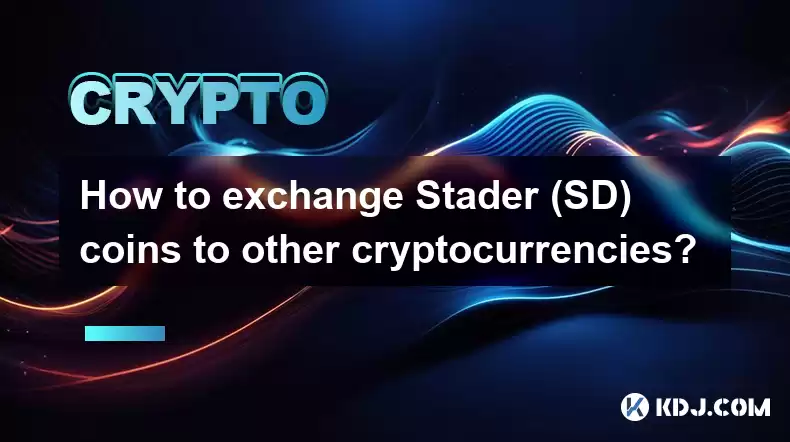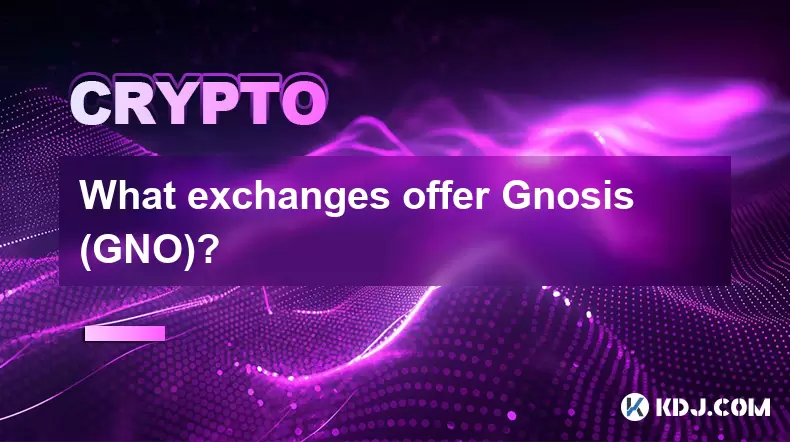-
 Bitcoin
Bitcoin $119000
-2.21% -
 Ethereum
Ethereum $4315
1.01% -
 XRP
XRP $3.151
-3.11% -
 Tether USDt
Tether USDt $0.0000
0.00% -
 BNB
BNB $808.5
-0.71% -
 Solana
Solana $175.8
-4.21% -
 USDC
USDC $0.9999
0.00% -
 Dogecoin
Dogecoin $0.2250
-3.92% -
 TRON
TRON $0.3469
1.77% -
 Cardano
Cardano $0.7818
-3.81% -
 Chainlink
Chainlink $21.47
-2.10% -
 Hyperliquid
Hyperliquid $43.30
-6.81% -
 Stellar
Stellar $0.4370
-2.84% -
 Sui
Sui $3.682
-4.40% -
 Bitcoin Cash
Bitcoin Cash $590.8
2.67% -
 Hedera
Hedera $0.2484
-5.20% -
 Ethena USDe
Ethena USDe $1.001
0.00% -
 Avalanche
Avalanche $23.10
-4.29% -
 Litecoin
Litecoin $119.2
-3.96% -
 Toncoin
Toncoin $3.409
0.90% -
 UNUS SED LEO
UNUS SED LEO $9.016
-1.29% -
 Shiba Inu
Shiba Inu $0.00001304
-3.82% -
 Uniswap
Uniswap $11.18
1.33% -
 Polkadot
Polkadot $3.913
-3.51% -
 Cronos
Cronos $0.1672
-3.08% -
 Dai
Dai $1.000
0.02% -
 Ethena
Ethena $0.7899
-4.70% -
 Bitget Token
Bitget Token $4.400
-1.23% -
 Pepe
Pepe $0.00001132
-5.93% -
 Monero
Monero $257.9
-6.44%
How to exchange Stader (SD) coins to other cryptocurrencies?
Traders can exchange Stader (SD) on decentralized exchanges like Uniswap and SushiSwap, or through centralized exchanges like Binance and Coinbase.
Jan 01, 2025 at 02:39 am

Key Points:
- Decentralized Exchanges (DEXs): Enables peer-to-peer trading of SD for other cryptocurrencies.
- Centralized Exchanges (CEXs): Offer broader asset selection and ease of use, but require user verification.
- OTC Trading: Over-the-counter deals allow for large volume trades with high liquidity and tailored pricing.
Step 1: Choose an Exchange
A. Decentralized Exchanges (DEXs)
- Uniswap: Popular and user-friendly DEX with a vast selection of assets, including SD.
- SushiSwap: Offers yield farming opportunities and a wide range of trading pairs, including SD.
- Curve Finance: Specializes in stablecoin trading and offers low slippage rates.
B. Centralized Exchanges (CEXs)
- Binance: Leading CEX with high trading volume and a comprehensive asset selection that includes SD.
- Coinbase: User-friendly platform with a large customer base, but limited asset selection.
- Kraken: Veteran exchange with a strong reputation for security and reliable trading services.
C. OTC Trading
- OTC desks provide high-volume trading options for institutional investors and large-scale businesses.
- Offer customized pricing, tailored transaction parameters, and privacy for large trades.
- Examples include OTC titans like Genesis, GSR, and Galaxy Digital.
Step 2: Deposit Stader (SD)
- Create an account on your chosen exchange or OTC platform.
- Transfer SD from your external wallet or previous exchange to the exchange's wallet.
- Ensure that the SD token is supported on the exchange or OTC desk.
Step 3: Choose a Trading Pair
- Identify the desired cryptocurrency you wish to exchange for SD.
- Determine the available trading pairs that include both SD and the target cryptocurrency.
- Consider trading spreads and slippage rates associated with different trading pairs.
Step 4: Place a Trade
- For DEXs: Specify the amount of SD you wish to sell and the price you are willing to accept.
- For CEXs: Enter the order size, price limit, and order type (market, limit, stop-limit).
- In OTC trades, negotiate terms directly with the counterparty, including price, transaction size, and settlement details.
Step 5: Complete the Trade
- Once the order is accepted or the OTC negotiation is finalized, the exchange will facilitate the trade.
- SD will be exchanged for the target cryptocurrency, and the funds will be credited to your exchange wallet.
- For OTC trades, settlement typically involves bank wire transfers or direct wallet-to-wallet transactions.
FAQs:
1. What are the fees involved in exchanging SD?
Fees vary depending on the exchange or OTC platform used. DEXs typically charge low trading fees, while CEXs may have additional fees for withdrawal or deposits. OTC trades may involve negotiation-based pricing that includes spreads and transaction fees.
2. How long does it take to exchange SD?
Trades on DEXs are usually executed instantly, while CEXs may take some time for order processing and trade settlement. OTC trades can take longer, depending on the negotiated terms and settlement methods.
3. What is the minimum amount of SD I can exchange?
The minimum amount of SD for trading varies depending on the exchange or OTC platform. Some platforms may have no minimum trading limit, while others may set a threshold for minimum trade sizes.
4. Can I exchange SD for fiat currencies?
Directly exchanging SD for fiat currencies on DEXs or OTC platforms is not always possible. In these cases, consider exchanging SD for a stablecoin pegged to a fiat currency, and then converting the stablecoin to fiat on an exchange that supports it.
Disclaimer:info@kdj.com
The information provided is not trading advice. kdj.com does not assume any responsibility for any investments made based on the information provided in this article. Cryptocurrencies are highly volatile and it is highly recommended that you invest with caution after thorough research!
If you believe that the content used on this website infringes your copyright, please contact us immediately (info@kdj.com) and we will delete it promptly.
- Japan, Bitcoin, and Treasuries: A New Era of Corporate Finance?
- 2025-08-12 18:30:12
- Bitcoin Bull Market: Decoding the Indicators for the Next Big Move
- 2025-08-12 18:30:12
- Do Kwon's Terra Collapse: From 'Not Guilty' to Guilty Plea?
- 2025-08-12 18:50:12
- Material Efficiency, Traceability, and Trust: The New Pillars of Sustainability
- 2025-08-12 18:50:12
- PumpFun (PUMP) Price: Riding the Meme Coin Wave or Facing a Wipeout?
- 2025-08-12 16:50:12
- Uniswap's Legal Clarity Fuels Price Target: Will UNI Hit $12.85?
- 2025-08-12 17:30:13
Related knowledge

How to purchase Aragon (ANT)?
Aug 09,2025 at 11:56pm
Understanding Aragon (ANT) and Its PurposeAragon (ANT) is a decentralized governance token that powers the Aragon Network, a platform built on the Eth...

Where to trade Band Protocol (BAND)?
Aug 10,2025 at 11:36pm
Understanding the Role of Private Keys in Cryptocurrency WalletsIn the world of cryptocurrency, a private key is one of the most critical components o...

What is the most secure way to buy Ocean Protocol (OCEAN)?
Aug 10,2025 at 01:01pm
Understanding Ocean Protocol (OCEAN) and Its EcosystemOcean Protocol (OCEAN) is a decentralized data exchange platform built on blockchain technology,...

How to invest in Kyber Network Crystal v2 (KNC)?
Aug 12,2025 at 05:21pm
Understanding Kyber Network Crystal v2 (KNC)Kyber Network is a decentralized liquidity hub built on the Ethereum blockchain that enables instant token...

Where can I buy UMA (UMA)?
Aug 07,2025 at 06:42pm
Understanding UMA and Its Role in Decentralized FinanceUMA (Universal Market Access) is an Ethereum-based decentralized finance (DeFi) protocol design...

What exchanges offer Gnosis (GNO)?
Aug 12,2025 at 12:42pm
Overview of Gnosis (GNO) and Its Role in the Crypto EcosystemGnosis (GNO) is a decentralized prediction market platform built on the Ethereum blockcha...

How to purchase Aragon (ANT)?
Aug 09,2025 at 11:56pm
Understanding Aragon (ANT) and Its PurposeAragon (ANT) is a decentralized governance token that powers the Aragon Network, a platform built on the Eth...

Where to trade Band Protocol (BAND)?
Aug 10,2025 at 11:36pm
Understanding the Role of Private Keys in Cryptocurrency WalletsIn the world of cryptocurrency, a private key is one of the most critical components o...

What is the most secure way to buy Ocean Protocol (OCEAN)?
Aug 10,2025 at 01:01pm
Understanding Ocean Protocol (OCEAN) and Its EcosystemOcean Protocol (OCEAN) is a decentralized data exchange platform built on blockchain technology,...

How to invest in Kyber Network Crystal v2 (KNC)?
Aug 12,2025 at 05:21pm
Understanding Kyber Network Crystal v2 (KNC)Kyber Network is a decentralized liquidity hub built on the Ethereum blockchain that enables instant token...

Where can I buy UMA (UMA)?
Aug 07,2025 at 06:42pm
Understanding UMA and Its Role in Decentralized FinanceUMA (Universal Market Access) is an Ethereum-based decentralized finance (DeFi) protocol design...

What exchanges offer Gnosis (GNO)?
Aug 12,2025 at 12:42pm
Overview of Gnosis (GNO) and Its Role in the Crypto EcosystemGnosis (GNO) is a decentralized prediction market platform built on the Ethereum blockcha...
See all articles

























































































